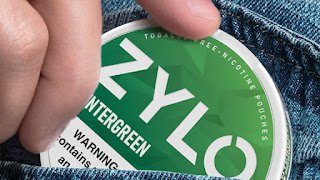As the world becomes more environmentally conscious, many people are starting to question the environmental impact of everyday products, including those used in smoking cessation. Nicotine pouches, which have gained popularity as a tobacco-free alternative, are often seen as a healthier option for individuals, but what about their impact on the environment? This article explores whether nicotine pouches are an eco-friendly alternative to traditional tobacco products and what the broader environmental implications of their use might be.
Nicotine pouches are formulated with a smart combination of ingredients designed to deliver a satisfying nicotine experience without the harmful effects of tobacco. These pouches are not only tobacco-free, but they also offer a smokeless solution, making them a cleaner choice for both personal health and the planet.
Key ingredients include:
l Nicotine: Extracted from tobacco, but delivered in a tobacco-free form.
l Flavorings: Available in natural or artificial varieties, enhancing the user experience with a range of refreshing flavors like mint, citrus, and berry.
l Sweeteners: Added to balance flavor, using either natural or artificial sweeteners.
l Fillers: Often made from plant-based fibers like eucalyptus or pine, these help to give the pouch its structure.
What sets nicotine pouches apart is their tobacco-free composition. Unlike traditional cigarettes that rely on burning tobacco leaves—resulting in harmful byproducts like tar and carbon monoxide—nicotine pouches offer a cleaner, simpler alternative. Moreover, many pouches are made with biodegradable plant fibers, reducing their environmental footprint right from the start. Some brands may still use synthetic materials, but the shift toward plant-based, biodegradable options signals a growing focus on sustainability.
Packaging: A Key Concern for Nicotine Pouches
One of the most significant environmental concerns associated with nicotine pouches is their packaging. Most nicotine pouches are sold in small plastic cans, which are not always recyclable. The sheer volume of single-use plastic that is generated by these containers can have a long-lasting impact on the environment, contributing to the growing plastic waste problem.
Even when consumers are careful to dispose of these plastic containers properly, recycling systems may not be equipped to handle this type of waste. In many cases, the small size of the containers makes them difficult to process in recycling facilities, which means they often end up in landfills.
To reduce this environmental burden, some companies are beginning to explore more eco-friendly packaging options. Biodegradable or recyclable alternatives could help lessen the environmental footprint of nicotine pouches, but widespread adoption of these measures is still in its early stages.
Environmental Impacts of Cigarette Production and Disposal
While the packaging of nicotine pouches is an area with room for improvement, the environmental damage caused by traditional cigarettes is far more severe. Cigarette production, from tobacco farming to disposal, has significant and long-lasting consequences for the planet.
Cigarette manufacturing involves the use of vast natural resources, beginning with the large-scale cultivation of tobacco, which contributes to deforestation and soil depletion. The production process also involves heavy pesticide use, which contaminates local ecosystems, while tobacco curing requires enormous amounts of energy.
Here’s how cigarettes harm the environment:
l Deforestation: Large areas of land are cleared for tobacco farming, leading to habitat loss and biodiversity reduction.
l Pesticides and Chemicals: Tobacco farming requires significant pesticide use, which contaminates soil and water, harming ecosystems.
l Water Consumption: Growing tobacco is water-intensive, depleting valuable freshwater resources.
l Pollution from Cigarette Butts: Cigarette filters, made from non-biodegradable cellulose acetate, contribute to global pollution. They are the most littered item in the world and take up to 10 years to decompose, leaching harmful chemicals into the environment.
When compared to the harmful cycle of cigarette production, nicotine pouches are an undeniably more sustainable choice. By eliminating tobacco farming, nicotine pouches sidestep the associated deforestation, pesticide use, and water consumption. Furthermore, since they are smokeless, they do not contribute to air pollution. The cleaner production and usage cycle of nicotine pouches make them an excellent alternative for those who want to reduce their environmental impact while quitting smoking.
Are Nicotine Pouches a More Sustainable Alternative?
When compared to the environmental impact of cigarette production, nicotine pouches do appear to be a more sustainable option. Because they don’t require the cultivation and harvesting of tobacco, nicotine pouches avoid many of the ecological harms associated with deforestation, pesticide use, and water consumption. Additionally, nicotine pouches do not contribute to air pollution, as there is no smoke or combustion involved.
Moreover, since nicotine pouches are small and portable, they are less likely to be discarded as litter in public spaces, reducing their impact on urban waste. The absence of cigarette butts, which are notorious for clogging streets, waterways, and oceans, makes nicotine pouches a cleaner alternative from a waste-management perspective.
However, while nicotine pouches may be more sustainable than cigarettes in terms of production and use, there are still areas where improvements can be made, especially in the sourcing of materials and the disposal of packaging.
Innovations in Eco-Friendly Nicotine Pouch Packaging
Several companies are starting to innovate in the area of eco-friendly packaging for nicotine pouches. For example, some brands have introduced biodegradable packaging options that help reduce the environmental impact of plastic waste. These containers break down more easily in landfills and are less harmful to ecosystems if they do happen to be littered.
Additionally, some manufacturers are working on creating fully recyclable packaging for nicotine pouches, which would allow consumers to dispose of their empty containers responsibly without contributing to landfill waste. While these efforts are still in the early stages, they represent an important step toward making nicotine pouches a truly eco-friendly product.
As consumer demand for sustainable products continues to grow, it’s likely that more companies will invest in these types of innovations, pushing the entire nicotine pouch industry toward greener practices.
Comparing Nicotine Pouches to Other Nicotine Replacement Products
It’s also worth comparing the environmental impact of nicotine pouches to other nicotine replacement therapies (NRT), such as nicotine gum, patches, and lozenges. Like nicotine pouches, these products are designed to help individuals quit smoking without the harmful effects of tobacco smoke. However, many of these alternatives also come with their own environmental costs.
Nicotine gum and lozenges, for example, often come in non-recyclable blister packs or wrappers that generate significant plastic waste. Nicotine patches, while less wasteful, still rely on single-use adhesive materials that end up in landfills. When considering the overall environmental impact of nicotine replacement products, nicotine pouches may have an edge, especially if they are packaged responsibly.
What Consumers Can Do to Reduce Their Environmental Footprint
If you’re using nicotine pouches as part of your smoking cessation journey and are concerned about their environmental impact, there are several steps you can take to reduce your carbon footprint.
Choose Eco-Friendly Brands
To reduce the environmental impact of nicotine pouches, opt for brands that prioritize sustainable packaging, such as Zylo, which offers biodegradable or recyclable options. By choosing eco-friendly brands, you not only lower your own carbon footprint but also encourage the industry to adopt greener practices. As consumer demand for sustainable products grows, more companies will be driven to innovate and reduce their environmental impact.
Dispose Responsibly
Ensure that plastic packaging is properly disposed of, even if local recycling programs don’t accept it. Reach out to waste management services for recycling options. Responsible disposal helps prevent plastic waste from ending up in landfills, contributing to a cleaner environment.
Advocate for Greener Products
Support companies that prioritize sustainability by choosing their products and sharing your preferences. Advocate for greener packaging through reviews or social media to push the industry toward eco-friendly innovations. Consumer demand can drive the shift to more sustainable nicotine pouch options.
The Future of Nicotine Pouches and Sustainability
Looking ahead, the nicotine pouch industry has a significant opportunity to lead the charge in making nicotine replacement products more eco-friendly. With continued innovation in sustainable materials and packaging, nicotine pouches could become a model for how consumer products can balance convenience, health benefits, and environmental responsibility.
As the demand for eco-friendly products grows, it is likely that we will see more companies following the lead of those who are already working toward reducing their environmental footprint. With consumers increasingly prioritizing sustainability, the future of nicotine pouches looks promising, provided the industry continues to evolve toward more environmentally conscious practices.
Conclusion
Nicotine pouches are a cleaner, more sustainable alternative to traditional cigarettes, offering significant environmental benefits by avoiding the harmful chemicals and waste associated with smoking. However, like many consumer products, they are not without their environmental challenges, particularly when it comes to packaging waste. With greater innovation and consumer demand for eco-friendly options, nicotine pouches have the potential to become a more sustainable choice for those looking to quit smoking. By supporting brands that prioritize green practices and adopting responsible disposal habits, consumers can play a key role in making nicotine pouches a part of a more eco-conscious future.
Also Read:https://thetubegalore.com/



